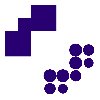
i
Bounteous x
Accolite
Filter interviews by
Bounteous x Accolite Software Engineer Interview Questions and Answers
43 Interview questions
Use tree traversal to find the minimum number in a tree structure.
Start at the root node and compare it with its children to find the minimum value.
Use depth-first search or breadth-first search to traverse the tree.
Keep track of the minimum value found so far as you traverse the tree.
Consider implementing a recursive function to traverse the tree efficiently.
Method overriding allows a subclass to provide a specific implementation of a method already defined in its superclass.
Occurs in object-oriented programming when a subclass redefines a method of its superclass.
The method in the subclass must have the same name, return type, and parameters as the method in the superclass.
Example: If a superclass has a method 'draw()', a subclass can override it to provide a specifi...
OOP (Object-Oriented Programming) is a programming paradigm based on objects and classes, promoting code reusability and modularity.
Encapsulation: Bundling data and methods that operate on the data within one unit (e.g., a class).
Inheritance: Mechanism to create a new class from an existing class, inheriting attributes and methods (e.g., a 'Dog' class inheriting from an 'Animal' class).
Polymorphism: Ability to pre...
Deadlock occurs when two or more processes are unable to proceed because each is waiting for the other to release resources.
Mutual Exclusion: Resources cannot be shared; they are allocated exclusively to one process.
Hold and Wait: Processes holding resources are allowed to request additional resources.
No Preemption: Resources cannot be forcibly taken from a process; they must be voluntarily released.
Circular Wait:...
Merge Sort is a divide-and-conquer algorithm that recursively divides an array into two halves, sorts them, and then merges them.
Divide the array into two halves
Recursively sort each half
Merge the sorted halves
To check for a loop in a linked list, we use the Floyd's cycle-finding algorithm.
Create two pointers, slow and fast, and initialize them to the head of the linked list.
Move slow pointer by one node and fast pointer by two nodes.
If there is a loop, the two pointers will eventually meet.
If there is no loop, the fast pointer will reach the end of the linked list.
Time complexity of this algorithm is O(n) and space com...
To check if a linked list is circular, we can use Floyd's cycle-finding algorithm.
Create two pointers, slow and fast, and initialize them to the head of the linked list
Move slow pointer by one node and fast pointer by two nodes
If the linked list is circular, the fast pointer will eventually catch up to the slow pointer
If the linked list is not circular, the fast pointer will reach the end of the list
Time complexit...
Registers are small, fast memory locations in a CPU that store data for quick access.
Registers are used to store data that is frequently accessed by the CPU.
They are faster than accessing data from RAM.
Registers are limited in number and size.
Examples of registers include the program counter, stack pointer, and general-purpose registers.
Register usage can be optimized for performance in code.
Accessing registers ca...
Binary Tree is a tree data structure where each node has at most two children. Binary Search Tree is a binary tree with the property that the left subtree of a node contains only nodes with keys lesser than the node's key and the right subtree of a node contains only nodes with keys greater than the node's key.
Binary Tree can have any values in the nodes, while Binary Search Tree has a specific order of values.
Bin...
The task is to find any number of elements in an array that add up to a given target.
Use a recursive approach to find all possible combinations of elements that add up to the target.
Start with the first element and recursively call the function with the remaining elements and the reduced target.
If the target becomes zero, add the current combination to the result.
If the target becomes negative or there are no more...
Bounteous x Accolite Software Engineer Interview Experiences
40 interviews found
It was an easy-medium level exam. It included 2 questions.
(5 Questions)
- Q1. There were 3 technical rounds and 1 hr round. I was asked about DSA, OOPS, Networking etc
- Q2. You just focus on the DSA.
- Q3. I was asked about the OOPS
- Q4. I was asked for write the code
- Ans.
The question requires writing code, likely involving algorithms or data structures.
Understand the problem requirements clearly before coding.
Break down the problem into smaller, manageable parts.
Choose appropriate data structures (e.g., arrays, lists, trees).
Write pseudocode to outline your logic before actual coding.
Test your code with various inputs to ensure correctness.
- Q5. I was asked for Networking
(2 Questions)
- Q1. Tell me about yourself?
- Q2. What is method overriding
I applied via Campus Placement and was interviewed in Oct 2024. There was 1 interview round.
I applied for Python coding round but instead they told to code with c
I applied via Approached by Company and was interviewed in Nov 2023. There were 5 interview rounds.

(1 Question)
- Q1. Hashmap , solid principles , heap , design pattern
(1 Question)
- Q1. Questions related to json web token
(1 Question)
- Q1. Wrote sql queries
(1 Question)
- Q1. Salary expectations, job location
Interview Preparation Tips
I applied via Campus Placement and was interviewed before Apr 2023. There were 5 interview rounds.
CS Fundamentals
OOPs Concept
Problem Solving(1 Question)
(3 Questions)
- Q1. DBMS Concepts ( Joins , Indexing , Views)
- Q2. Problem Solving 3 Questions Question 1 - Array Based Question 2 - Coin Change(DP) Question 3 - Linked List Based
- Q3. Project Explanation which includes Q&A as well.
- Ans.
Developed a project management tool for tracking tasks and deadlines.
Implemented user authentication and authorization for secure access.
Utilized a relational database to store project data and user information.
Designed a user-friendly interface with drag-and-drop functionality for task management.
(5 Questions)
- Q1. Problem Solving 2 Questions Question 1 - Bit Manipulation Question 2 - Tree DFS Based
- Q2. SQL Joins (Left and Outer Join)
- Q3. OOPs Concept Live Demonstration
- Q4. Questions related to previous internships
- Q5. Logical Reasoning Question
(2 Questions)
- Q1. Problem Solving 2 Questions Question 1 - String Based (DP) Question 2 - Priority Queue Based
- Q2. Brief Discussion upon Project
(4 Questions)
- Q1. Behavioral Questions
- Q2. Previous Experiences
- Q3. Hobbies and Skills
- Q4. Expectations from the Organization?
Interview Preparation Tips
- DSA
- Problem Solving
- Algorithm Development
- Java
- DBMS
- OOPS
- SQL
- Project
- Dynamic Programing
Major area to focus upon - DSA , DBMS , OOPs Concepts
Communication skills is must.
Aptitude test for online coding round
2 Coding question and questions related to project
(2 Questions)
- Q1. Where do you see yourself in 5 years
- Ans.
In five years, I envision myself as a lead software engineer, driving innovative projects and mentoring junior developers.
I aim to lead a team on impactful projects, such as developing scalable applications that improve user experience.
I plan to enhance my skills in emerging technologies, like AI and machine learning, to contribute to cutting-edge solutions.
I aspire to mentor junior engineers, sharing knowledge and fos...
- Q2. Why Accolite over any other company
- Ans.
Accolite stands out for its innovative culture, diverse projects, and commitment to employee growth and client success.
Innovative Culture: Accolite fosters a creative environment where new ideas are encouraged, leading to cutting-edge solutions.
Diverse Projects: The opportunity to work on a variety of projects across different industries enhances my skill set and keeps work engaging.
Commitment to Growth: Accolite inves...
I applied via Job Portal and was interviewed before Aug 2023. There were 3 interview rounds.
DSA related questions
DSA related questions
(1 Question)
- Q1. Difficult situation how u handled
I applied via Cuvette and was interviewed before Dec 2023. There was 0 interview round.
- Q1. Aptitude questions followed by two coding questions.
- Q2. Two coding questions followed by a discussion on projects.
- Q3. Three coding questions and inquiries related to Data Structures and Algorithms (DSA), Object-Oriented Programming (OOP), and project-related topics.
- Q4. Solely 2 coding question
Interview Preparation Tips
- DSA
- OOPS
I applied via Referral and was interviewed before Sep 2023. There were 4 interview rounds.
Dsa questions on graph and array
(2 Questions)
- Q1. Tree traversal to find minimum number
- Ans.
Use tree traversal to find the minimum number in a tree structure.
Start at the root node and compare it with its children to find the minimum value.
Use depth-first search or breadth-first search to traverse the tree.
Keep track of the minimum value found so far as you traverse the tree.
Consider implementing a recursive function to traverse the tree efficiently.
- Q2. Queues question
(2 Questions)
- Q1. Array question for 2 pointer
- Q2. Oops wuestions and project discussion
(2 Questions)
- Q1. General hr questions
- Q2. Offer discussions
Skills evaluated in this interview
I applied via Campus Placement and was interviewed before Sep 2023. There were 5 interview rounds.
DBMS, OOPS, OS, CN, Aptitude
Graph and tree based question.
(2 Questions)
- Q1. Coding questions on tree, linkedlist and array.
- Q2. Project related questions.
(2 Questions)
- Q1. SQL related questions.
- Q2. Tech related questions.
(1 Question)
- Q1. Basic HR questions available on google.
Top trending discussions






Bounteous x Accolite Interview FAQs
Some of the top questions asked at the Bounteous x Accolite Software Engineer interview -
The duration of Bounteous x Accolite Software Engineer interview process can vary, but typically it takes about less than 2 weeks to complete.
Tell us how to improve this page.
Bounteous x Accolite Interviews By Designations
- Bounteous x Accolite Software Engineer Interview Questions
- Bounteous x Accolite Senior Software Engineer Interview Questions
- Bounteous x Accolite Software Developer Interview Questions
- Bounteous x Accolite Java Developer Interview Questions
- Bounteous x Accolite Softwaretest Engineer Interview Questions
- Bounteous x Accolite Associate Technical Delivery Manager Interview Questions
- Bounteous x Accolite Software Developer Intern Interview Questions
- Bounteous x Accolite Test Engineer Interview Questions
- Show more
Interview Questions for Popular Designations
- Software Developer Interview Questions
- Senior Software Engineer Interview Questions
- Senior Engineer Interview Questions
- System Engineer Interview Questions
- Associate Software Engineer Interview Questions
- Project Engineer Interview Questions
- Lead Engineer Interview Questions
- Software Development Engineer Interview Questions
- Show more
Overall Interview Experience Rating
based on 22 interview experiences
Difficulty level
Duration
Top Skills for Bounteous x Accolite Software Engineer
Software Engineer Interview Questions from Similar Companies
Bounteous x Accolite Software Engineer Reviews and Ratings
based on 82 reviews
Rating in categories
|
Senior Software Engineer
1.7k
salaries
| ₹5.6 L/yr - ₹24.8 L/yr |
|
Software Engineer
601
salaries
| ₹5.8 L/yr - ₹14.4 L/yr |
|
Associate Technical Delivery Manager
438
salaries
| ₹20.2 L/yr - ₹36 L/yr |
|
Senior Test Engineer
226
salaries
| ₹8.2 L/yr - ₹17.3 L/yr |
|
Technical Delivery Manager
129
salaries
| ₹22 L/yr - ₹54.9 L/yr |

Xoriant

CitiusTech

HTC Global Services

HERE Technologies
- Home >
- Interviews >
- Bounteous x Accolite Interview Questions















